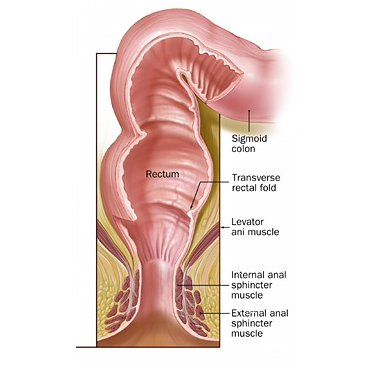Question:-
What about the inner anal sphincter? Does it follow the voluntary muscle state?
“You can manually open the outer anal sphincter by pushing as you would to release a fart or go to the toilet. You need to actively push out to open things up and make it easier for things to get in.”
Answer:-
The simple answer is no. But ….
The inner anal sphincter (IAS) is wired to the brain in the same way as the outer anal sphincter (OAS). The IAS is wire directly to neuroreceptors in the walls of the lower rectum. The connection is part of the enteric nervous system in the lower part of the spinal cord. Pressure on the walls and stretching the walls is what triggers the IAS to relax.
Peristalsis constantly pushed the stuff that you eat, towards and into the rectum. Our brains do get signals from the sympathetic nervous system when the lower rectum starts to fill up (sometimes it is only gas) and we sense that something is trying to get out. If you ignore those early warning signals, the rectum fills and, the pressure on the walls and stretching, results in the IAS suddenly relaxing. Now it is time to run to the toilet.
In the normal, “closed” state, your inner anal sphincter provides about 80% of the closing force. Once the IAS relaxes, you can clench your ass increasing the holding force of the Outer Anal Sphincter (OAS) but, typically, this will only be half the normal closing force and it gets worse as the OAS start loosing strength, just like the muscles in your arms and legs, so within minutes you are loosing any chance of keeping your anus closed. Your OAS is no match for the intestinal peristalsis.
The IAS can be (and is) reprogramed in an anal receptive through a process of Classical Conditioning. This is exactly the same as Pavlov training a dog to salivate at the mere suggestion of approaching food. When the thought of anal penetration is linked to sexual arousal the IAS learns to relax at the thought of being penetrated.


Leave A Comment
You must be logged in to post a comment.